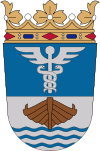Jyväskylä
| Jyväskylä | |||
|---|---|---|---|
| — City — | |||
| Jyväskylän kaupunki | |||
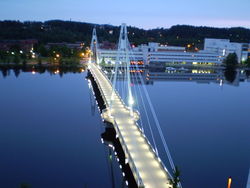 |
|||
|
|||
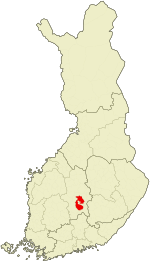 |
|||
| Coordinates: | |||
| Country | Finland | ||
| Region | Central Finland | ||
| Sub-region | Jyväskylä sub-region | ||
| Charter | 1837 | ||
| Government | |||
| - City manager | Markku Andersson | ||
| Area(2010-01-01)[1] | |||
| - City | 1,466.46 km2 (566.2 sq mi) | ||
| - Land | 1,171.17 km2 (452.2 sq mi) | ||
| - Water | 295.29 km2 (114 sq mi) | ||
| Area rank | 297th largest in Finland | ||
| Population (2010-03-31)[2] | |||
| - City | 129,777 | ||
| - Rank | 7th largest in Finland | ||
| - Density | 110.81/km2 (287/sq mi) | ||
| - Metro | 172,278 | ||
| Population by native language[3] | |||
| - Finnish | 96.7% (official) | ||
| - Swedish | 0.2% | ||
| - Others | 3% | ||
| Population by age[4] | |||
| - 0 to 14 | 16.4% | ||
| - 15 to 64 | 69.8% | ||
| - 65 or older | 13.8% | ||
| Time zone | EET (UTC+2) | ||
| - Summer (DST) | EEST (UTC+3) | ||
| Municipal tax rate[5] | 19% | ||
| Unemployment rate | 13.8% | ||
| Website | www.jkl.fi | ||
Jyväskylä (Finnish pronunciation: [ˈjyvæsˌkylæ]) is a city and municipality located in Central Finland, 147 kilometres (91 mi) north-east of Tampere and 270 kilometres (170 mi) north of Helsinki, on northern coast of lake Päijänne. It is the capital of Central Finland. The site of many education-related firsts in Finland, Jyväskylä is known as a city of schools, the Athens of Finland. It is also famous for its many buildings designed by Alvar Aalto. The city hosts Neste Oil Rally Finland, which is part of the World Rally Championship. It is also home of the annual Jyväskylä Arts Festival.
As of 31 March 2010, Jyväskylä had a population of 129,777.[2]
The Jyväskylä sub-region includes Jyväskylä, Laukaa, Muurame, Petäjävesi and Toivakka.
In 2004, Markku Andersson became the city mayor. He was the mayor of Lappeenranta until that year.[6]
Contents |
History
In Jyväskylä region there are archeological findings from the stone age and cultivation had already started 3500 years ago. According to the oldest available taxation documents (maakirja) there were seven estates in the Jyväskylä region in 1539. One of them, the estate of Mattila, alone possessed the areas stretching from the village of Keljo to the villages of Vesanka and Palokka. The oldest estate in Jyväskylä that has been held continuously by the same family is the estate of Lahti which emerged when the estate of Mattila was split for two brothers in 1600. The history of the estate of Lahti and the family of Lahti have had a significant impact on the development of Jyväskylä region. Lahdenrinne in the south-west corner of Jyväsjärvi lake belongs to the old heartland of the estate of Lahti.
The City of Jyväskylä was founded on 22 March 1837 by Czar Nicholas I of Russia and the infrastructure was essentially built from scratch. The original town was built between Lake Jyväsjärvi (which is connected to Lake Päijänne) and the Jyväskylä ridge (Harju), and consisted of most of the current grid-style city centre. In the early 20th century, the town expanded several times. Most of today's Jyväskylä was built after the Continuation war, when refugees from Karelia and other parts of the country moved to the city and housing was badly needed. Today, Jyväskylä is growing fast - by approx. 1,000 inhabitants/year.
Säynätsalo was consolidated with Jyväskylä in 1993. Jyväskylän maalaiskunta and Korpilahti were consolidated with Jyväskylä on January 1, 2009.
Name
The second part of the the city's name, kylä, means village. The first part of the city's name, jyväs, has been associated with Taxus, a genus of yews, and the Old Prussian word juwis. It has also been speculated that the word jyväs referes to the sun's reflection of the surface of the water.[7]
Administrative division
Subdivisions
This is a listing of the 89 districts (suuralueet in Finnish, storområden in Swedish) in the city of Jyväskylä in an official order.
|
|
|
[8].
Geography
Jyväskylä is located in the Finnish Lakeland. Lakes and rivers constitute even 20% (295 km2) of the total area of the city.[9] 36 lakes are located alone in The Old Jyväskylä (the city before the consolidations in 2008), which has an area of 137 km2.[10] Most notable lakes are Päijänne, Jyväsjärvi, Leppävesi, Muuratjärvi, Tuomiojärvi, Palokkajärvi, Alvajärvi, Vesankajärvi, Luonetjärvi and Köhniönjärvi.
The landscape in Jyväskylä is hilly, forested and full of waters. The architect Alvar Aalto compared the hilly landscape of Jyväskylä to Toscana in Italy: "The slope of Jyväskylä ridge is almost like the mountain vineyards of Fiesole". [11]
Climate
| Climate data for Jyväskylä | |||||||||||||
|---|---|---|---|---|---|---|---|---|---|---|---|---|---|
| Month | Jan | Feb | Mar | Apr | May | Jun | Jul | Aug | Sep | Oct | Nov | Dec | Year |
| Source: Climatological statistics for the normal period 1971–2000[12] | |||||||||||||
Economy
Main sources of livelihood in Jyväskylä are educational and health care services, paper machinery production, information technology and energy sector. Most important private employers are paper machinery producer Metso ltd., retail trade company Keskimaa, real estate service company ISS, wind turbine gear manufacturer Moventas and IT service company Tieto.[13]
The unemployment rate in Jyväskylä is 14.7% (7/2009), which is higher than average in Finland (10,7% in 7/2009), due to high number of students.[14]
Sports
The University of Jyväskylä is the only university in Northern Europe with a faculty of sports. The faculty has been a key player to develop a strong sports culture in the city.
List of successful sport teams from Jyväskylä
- JYP is the current Finnish Championship bronze medalist in ice hockey.
- Jyväskylän Jalkapalloklubi (FC JJK) plays in Veikkausliiga, the top division of Finnish football.
- Jyväskylän Seudun Palloseura, or just JPS, plays in the highest bandy division.
- Jyväskylän Kiri is the most successful Finnish baseball team in history. Currently they play in the top division Superpesis.
- Kirittäret holds ten Finnish Championships in women's Finnish baseball league. Latest championship is from summer 2009.
- Jyväskylän seudun Jaguaarit plays in the top division of Finnish American football league.
- Happee plays floorball in the Finnish top division both in men's and women's league.
Education
Jyväskylä is a traditional education city. A number of firsts in Finnish education have taken place in Jyväskylä:
- The first Finnish-medium lyceum (high school) (1858) (lyceum being a Finnish equivalent of high school). Today the school is named Jyväskylän Lyseon Lukio
- The first Finnish-medium teacher training college (1863)
- The first Finnish-medium school for girls (1864)
- Finland's first Summer University (1914)
Due to this, among other things, the city earned the nickname Athens of Finland.
The teacher training college later evolved into the College of Education (1934) and further into the multidisciplinary University of Jyväskylä (1966).
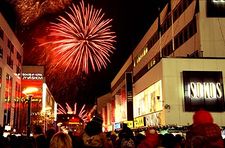
The University of Jyväskylä is one of the most popular universities in Finland. Almost 16,000 students are enrolled to study for a Bachelor's or Master's degree, and the university also offers PhD programs in most of its subjects. Historically, the university has excelled in the study of education, but in the last few decades it has also gained respect in the sciences. It is the only university in Finland offering university-level education in sports, training sports teachers and coaches. Its IT program is the largest in the country in terms of attendance. Including school children, and the students in high schools, vocational schools, the university of applied sciences, known also for its IT program, and the university, the number of students and pupils in the city reaches 44,000, boosting Jyväskylä's reputation as a "student city".
Transport
Jyväskylä railway station is served by VR direct trains to Helsinki, Pieksämäki, Tampere, Turku, Vaasa and many other destinations in Finland. The station was extensively modernised in 2002.
Jyväskylä Airport was expanded in 2004. It's situated in Tikkakoski, about 20 kilometres (12 mi) north of Jyväskylä. It has direct flights to Helsinki-Vantaa Airport.
The city is on crossroads of many main roads of Finland. European route E75 passes the city from South to North and E63 from Southeast to Northwest.
Jyväskylä harbour is home for many passenger ships operating on lake Päijänne.
The public transportation system is operated by Jyväskylän liikenne and it is based on bus lines.
People
Artists
Politicians
|
Athletes
|
International relations
Twin towns — Sister cities
Jyväskylä is twinned with:
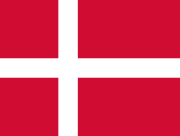 Esbjerg Municipality, Denmark (1947)
Esbjerg Municipality, Denmark (1947)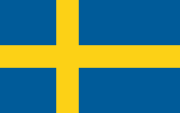 Eskilstuna Municipality, Sweden (1947)
Eskilstuna Municipality, Sweden (1947) Debrecen, Hungary (1970)
Debrecen, Hungary (1970)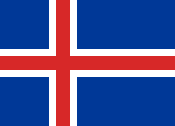 Fjarðabyggð, Iceland (1958)
Fjarðabyggð, Iceland (1958)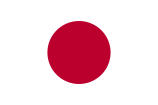 Niiza, Japan (1997)
Niiza, Japan (1997) Potsdam, Germany (1985)
Potsdam, Germany (1985) Poznań, Poland (1974)
Poznań, Poland (1974)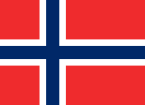 Stavanger, Norway (1947)
Stavanger, Norway (1947)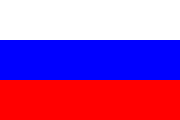 Yaroslavl, Russia (1966)[15]
Yaroslavl, Russia (1966)[15]
Friendship cities
See also
- Asteroid 1500 Jyväskylä (named after the town by its Finnish discoverer, Yrjö Väisälä).
References
- ↑ "Area by municipality as of 1 January 2010" (in Finnish and Swedish) (PDF). Land Survey of Finland. http://www.maanmittauslaitos.fi/sites/default/files/pinta_alat_kunnittain_01012010.pdf. Retrieved 23 November 2010.
- ↑ 2.0 2.1 "Population by municipality as of 31 March 2010" (in Finnish and Swedish). Population Information System. Population Register Center of Finland. http://www.vrk.fi/vrk/files.nsf/files/ACFC13B2F489698CC22577030039BD73/$file/20100331.htm. Retrieved 13 April 2010.
- ↑ "Population according to language and the number of foreigners and land area km2 by area as of 31 December 2008". Statistics Finland's PX-Web databases. Statistics Finland. http://pxweb2.stat.fi/Dialog/varval.asp?ma=060_vaerak_tau_107_fi&ti=V%E4est%F6+kielen+mukaan+sek%E4+ulkomaan+kansalaisten+m%E4%E4r%E4+ja+maa%2Dpinta%2Dala+alueittain++1980+%2D+2008&path=../Database/StatFin/vrm/vaerak/&lang=3&multilang=fi. Retrieved 29 March 2009.
- ↑ "Population according to age and gender by area as of 31 December 2008". Statistics Finland's PX-Web databases. Statistics Finland. http://pxweb2.stat.fi/Dialog/varval.asp?ma=050_vaerak_tau_104_fi&ti=V%E4est%F6+i%E4n+%281%2Dv%2E%29+ja+sukupuolen+mukaan+alueittain+1980+%2D+2008&path=../Database/StatFin/vrm/vaerak/&lang=3&multilang=fi. Retrieved 28 April 2009.
- ↑ "List of municipal and parish tax rates in 2010". Tax Administration of Finland. 24 November 2009. http://www.vero.fi/download.asp?id=5853;25512. Retrieved 13 January 2010.
- ↑ "Jyväskylän kaupunginjohtaja: Curriculum Vitae" (in Finnish). http://www.jyvaskyla.fi/hallinto/kaupunginjohtaja/cv. Retrieved 2 May 2010.
- ↑ http://www.sissoset.net/aineisto/nimi.htm
- ↑ Jyväskylän kaupunki: Kaupunginosat (in Finnish)
- ↑ http://www.jyvaskyla.fi/instancedata/prime_product_julkaisu/jyvaskyla/embeds/36620_yleisesite_suomi_2010_www.pdf
- ↑ http://www.jyvaskyla.fi/instancedata/prime_product_julkaisu/jyvaskyla/embeds/32842_ymparisto2008.pdf
- ↑ "Nature and space: Aalto and Le Corbusier" (in English). Routledge. 2003. http://books.google.fi/books?id=YV9FzaIu5kYC&pg=PA38&lpg=PA38&dq=aalto+jyv%C3%A4skyl%C3%A4+toscana&source=bl&ots=CXDpw_Arck&sig=49rqioAuQjabAUKQlETvShLE46M&hl=fi&ei=BjVCTOTkBN6XONT4-aYN&sa=X&oi=book_result&ct=result&resnum=3&ved=0CDMQ6AEwAg#v=onepage&q&f=false. Retrieved 2010-07-17.
- ↑ Climatological statistics for the normal period 1971–2000
- ↑ http://www.jyvaskyla.fi/info/tietoja_jyvaskylasta
- ↑ [1]
- ↑ 15.0 15.1 15.2 "Twin cities". International relations. http://www3.jkl.fi/international/intrelations/twin.shtml. Retrieved 2006-08-02.
External links
- 28 Hours in Jyväskylä - Time-lapse video of 28 hours in Jyväskylä (filmed in July 2007)
- City of Jyväskylä – International version of the official website
- Map of Jyväskylä
- Region of Jyväskylä Tourist Information
- University of Jyväskylä
- An artistic photography gallery of the city
|
||||||||||||||
|
|||||||||||||||||||||||||||||||||||||||||||||||||||||||||||||||||||||||||||||||||||||||||||||||||||||||
